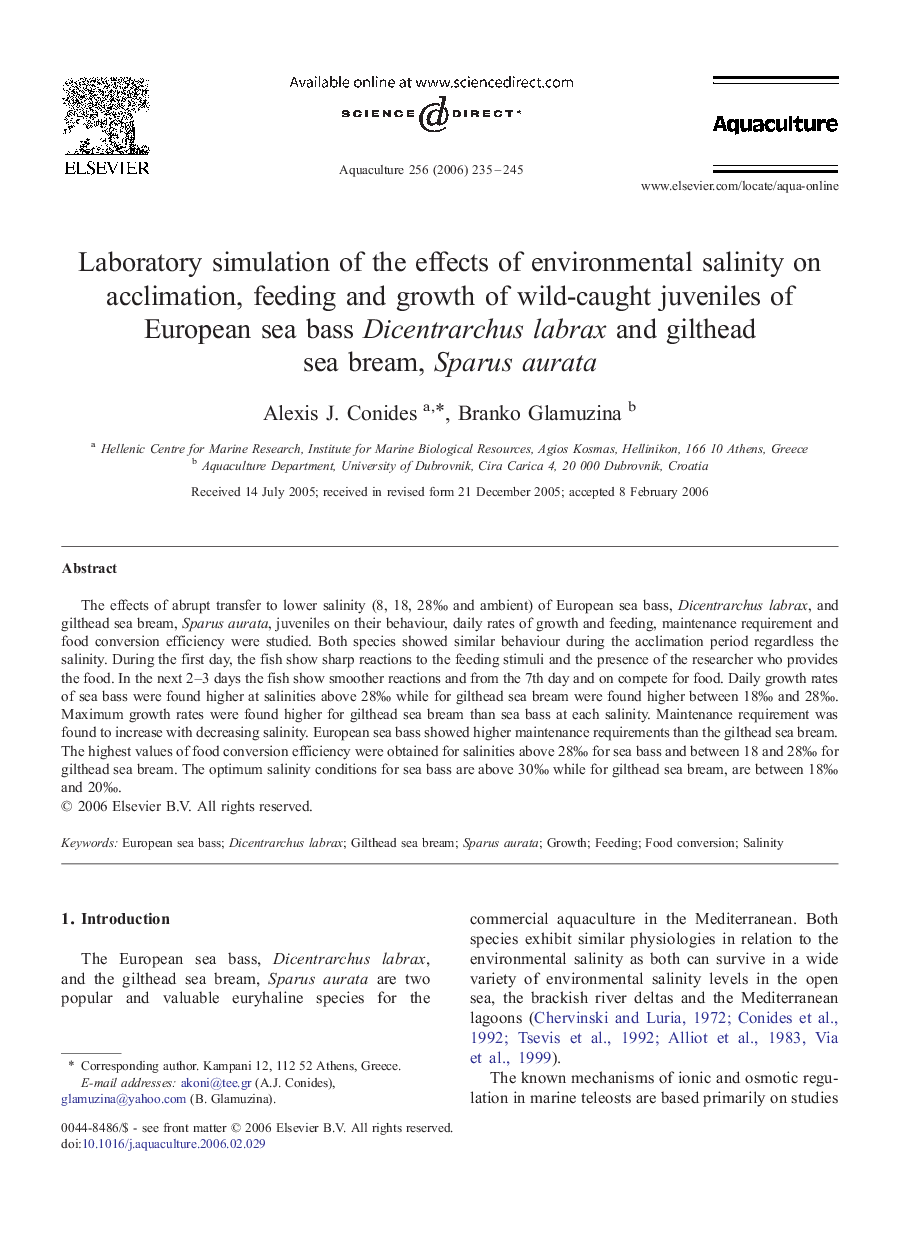| Article ID | Journal | Published Year | Pages | File Type |
|---|---|---|---|---|
| 2425922 | Aquaculture | 2006 | 11 Pages |
The effects of abrupt transfer to lower salinity (8, 18, 28‰ and ambient) of European sea bass, Dicentrarchus labrax, and gilthead sea bream, Sparus aurata, juveniles on their behaviour, daily rates of growth and feeding, maintenance requirement and food conversion efficiency were studied. Both species showed similar behaviour during the acclimation period regardless the salinity. During the first day, the fish show sharp reactions to the feeding stimuli and the presence of the researcher who provides the food. In the next 2–3 days the fish show smoother reactions and from the 7th day and on compete for food. Daily growth rates of sea bass were found higher at salinities above 28‰ while for gilthead sea bream were found higher between 18‰ and 28‰. Maximum growth rates were found higher for gilthead sea bream than sea bass at each salinity. Maintenance requirement was found to increase with decreasing salinity. European sea bass showed higher maintenance requirements than the gilthead sea bream. The highest values of food conversion efficiency were obtained for salinities above 28‰ for sea bass and between 18 and 28‰ for gilthead sea bream. The optimum salinity conditions for sea bass are above 30‰ while for gilthead sea bream, are between 18‰ and 20‰.
